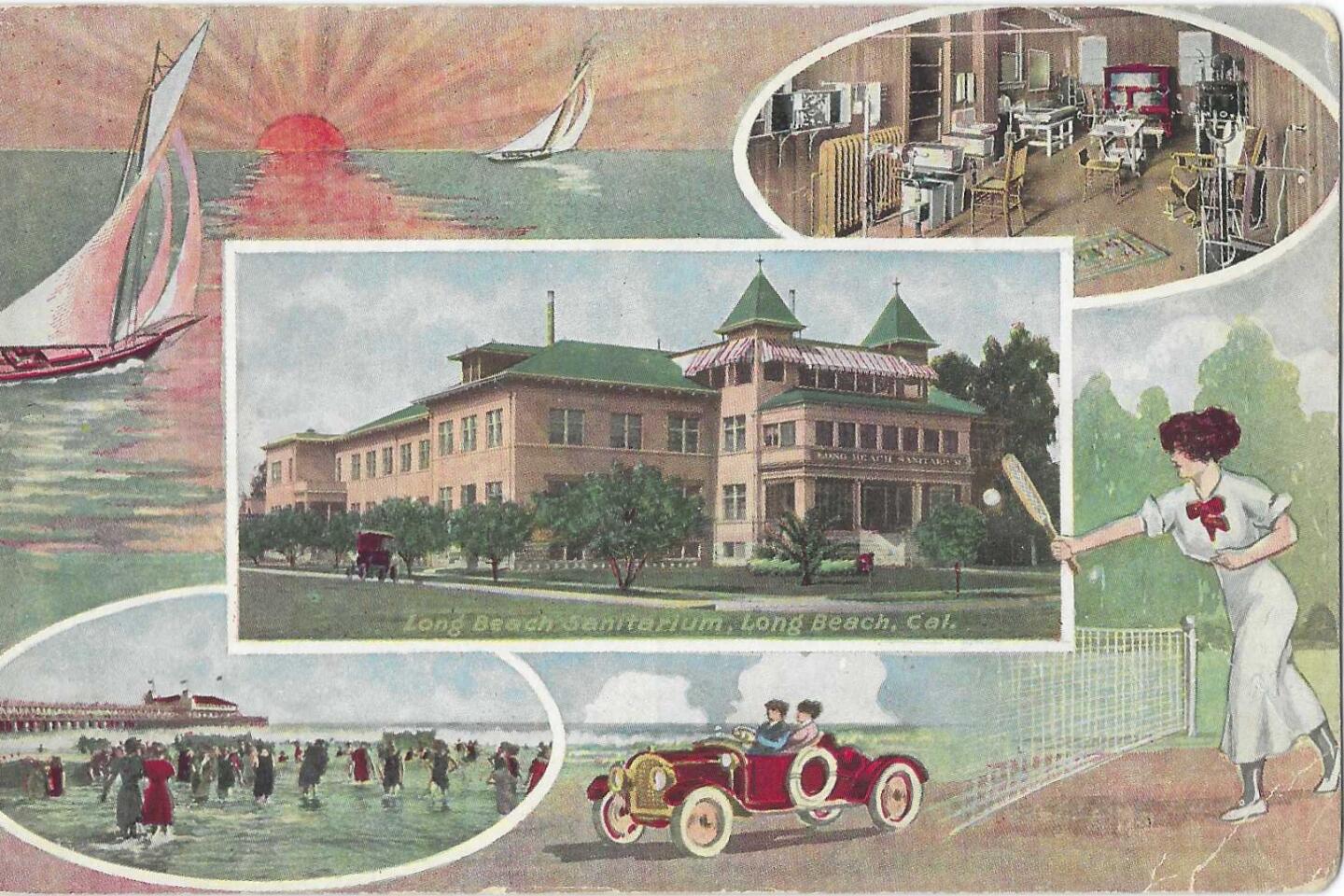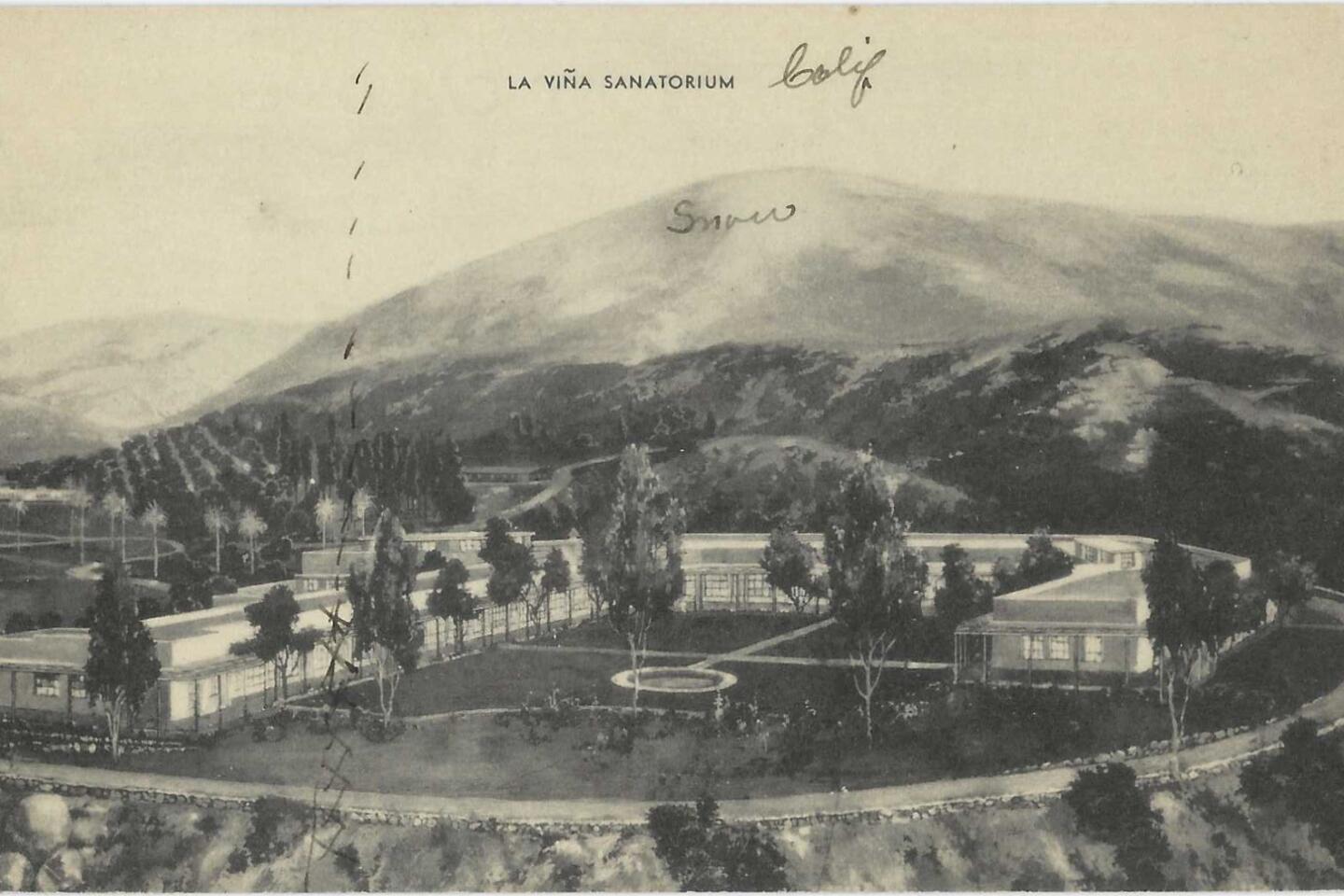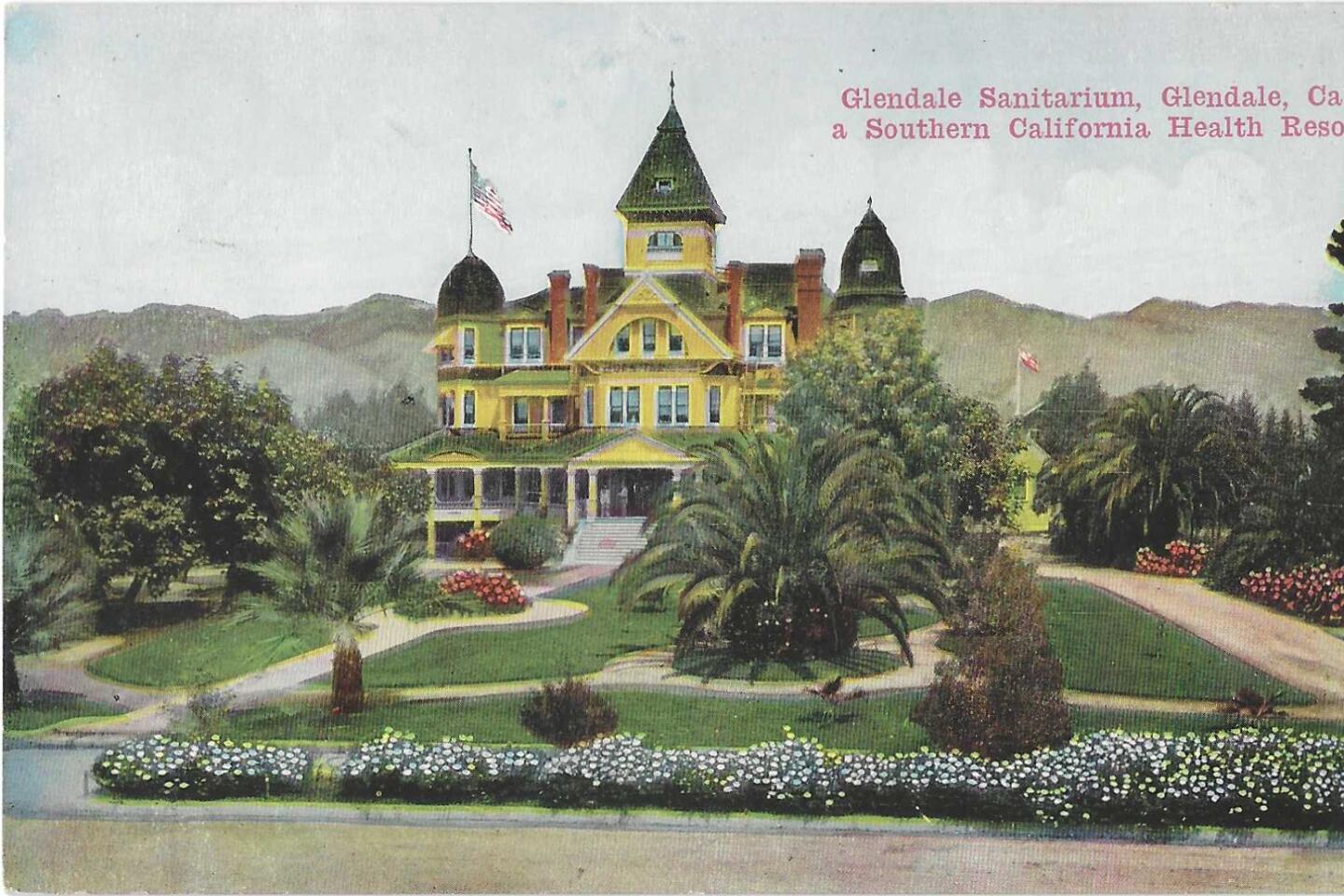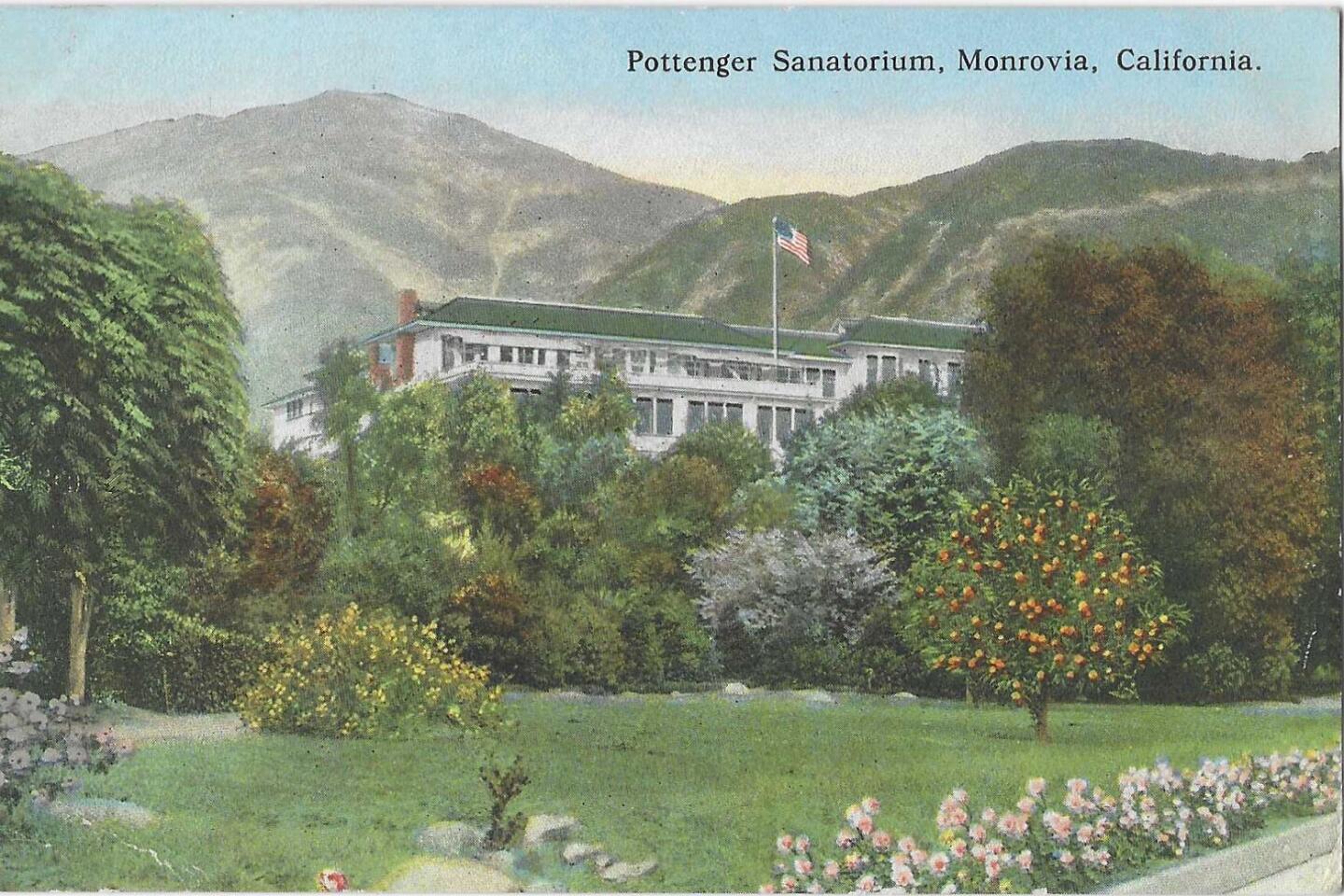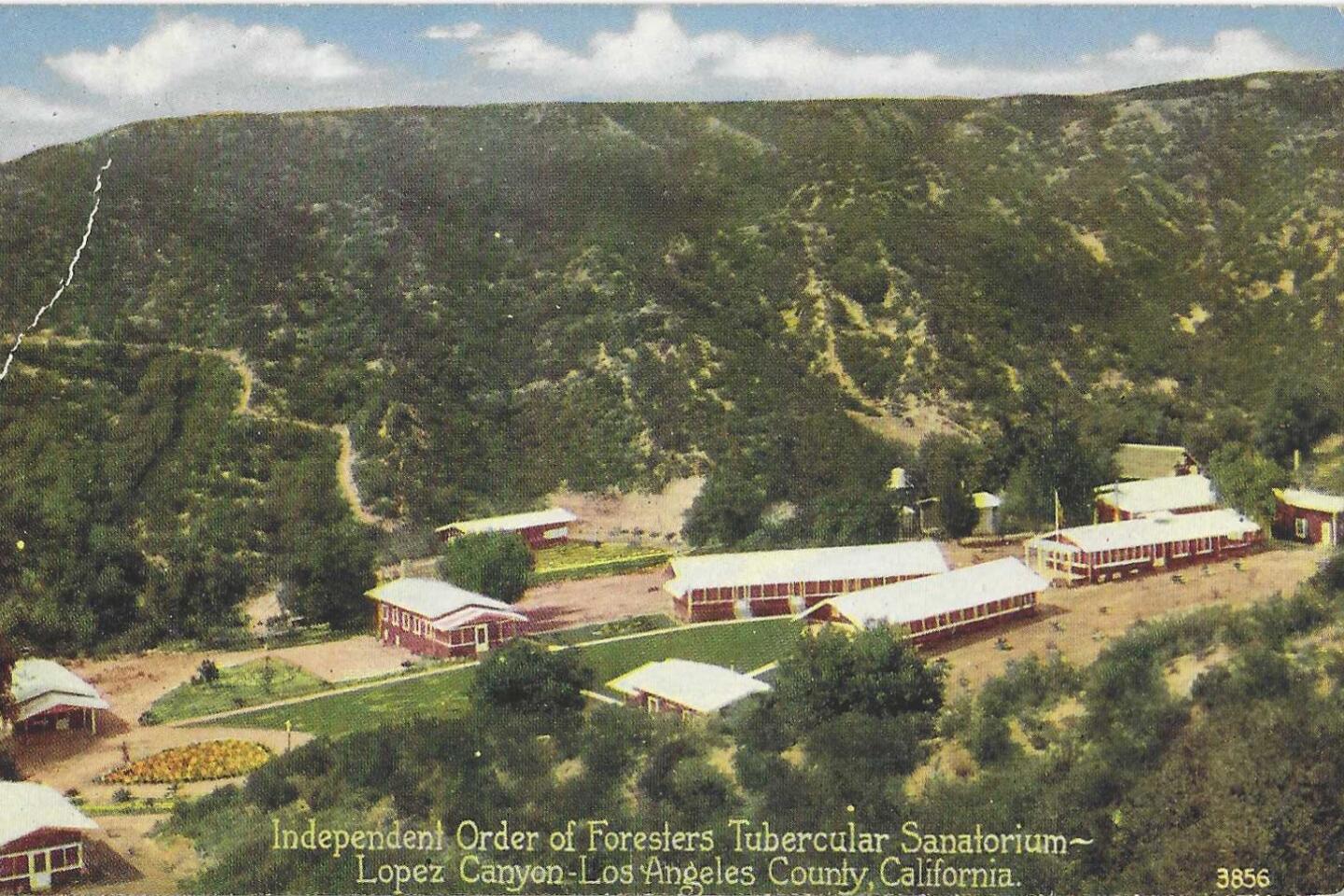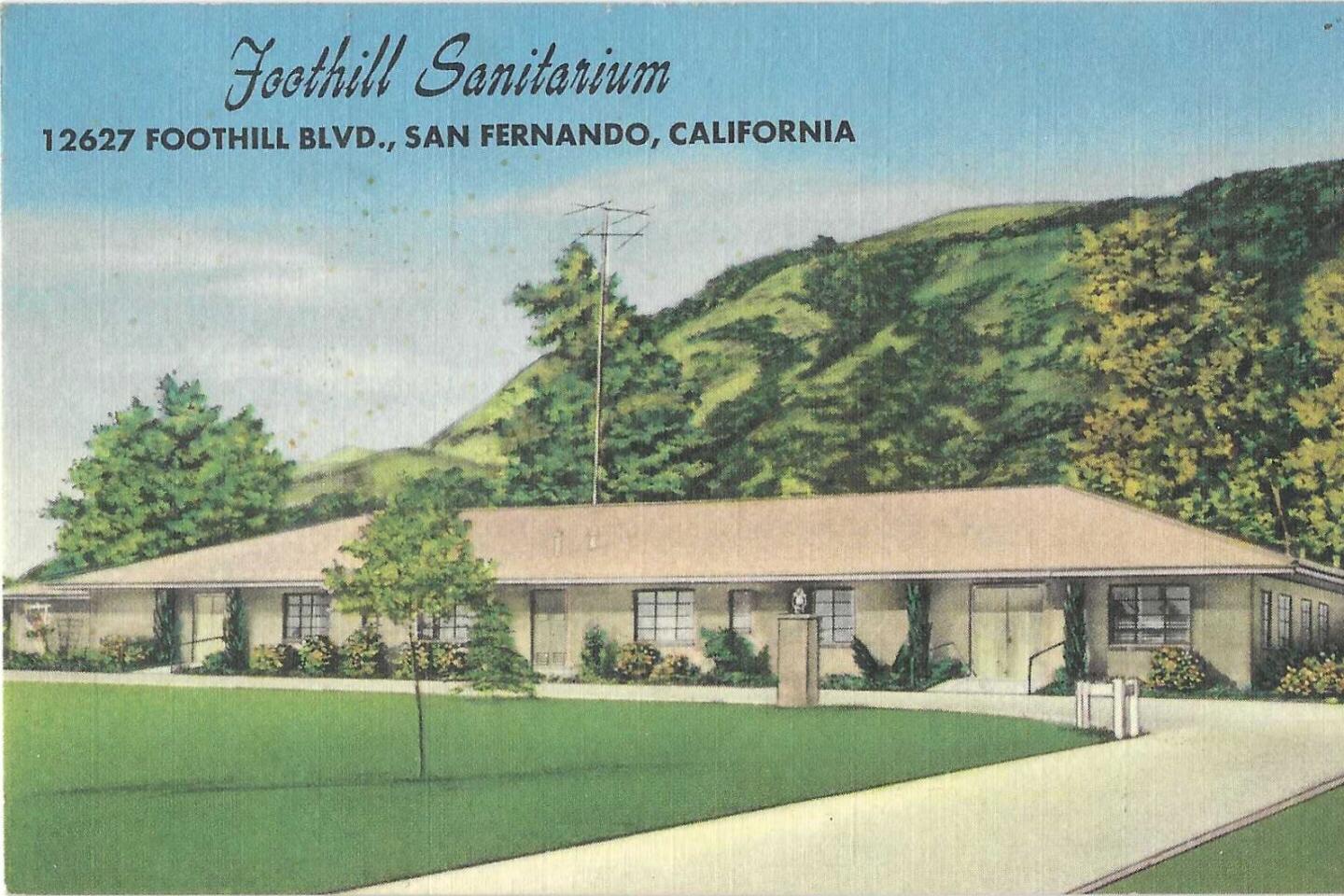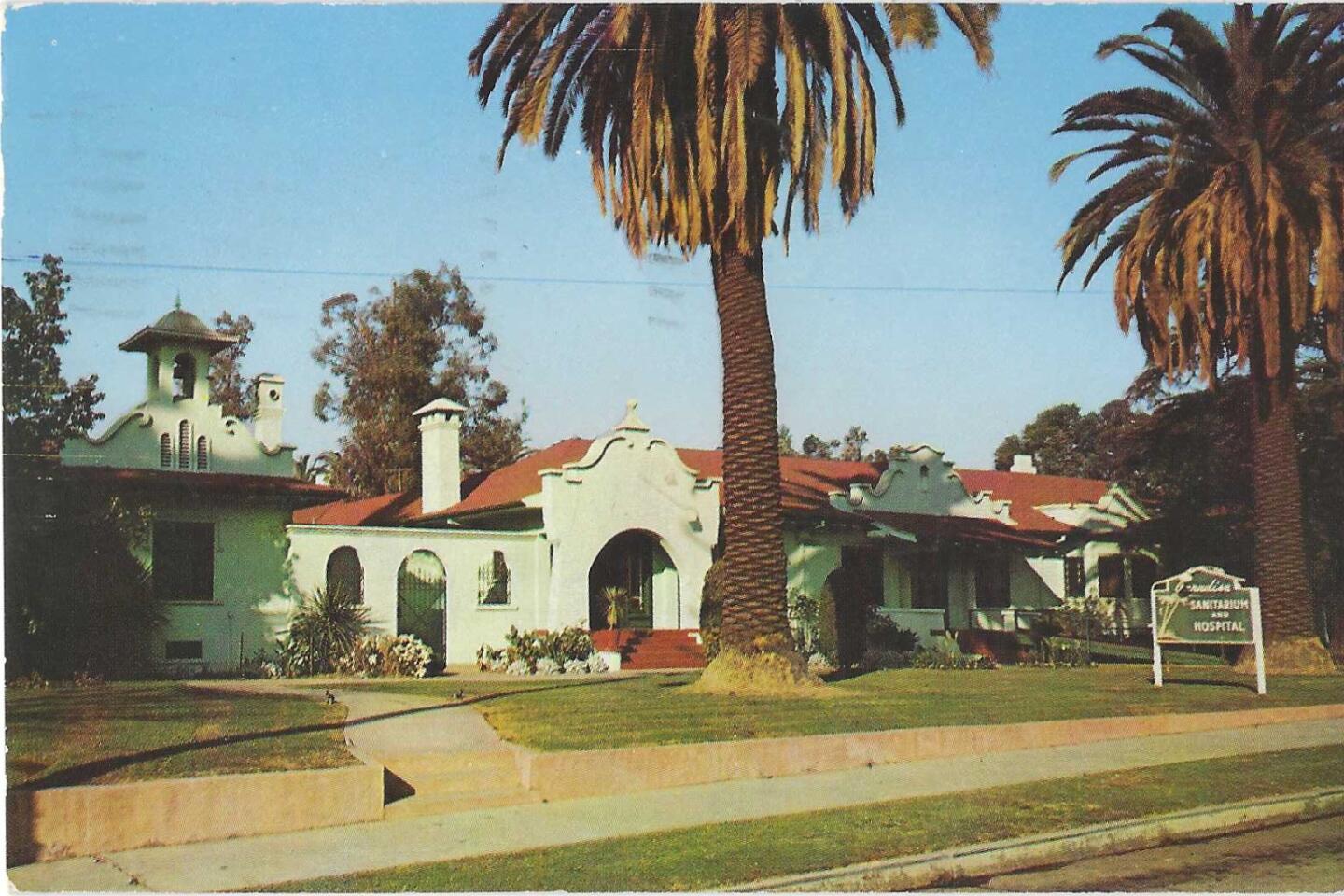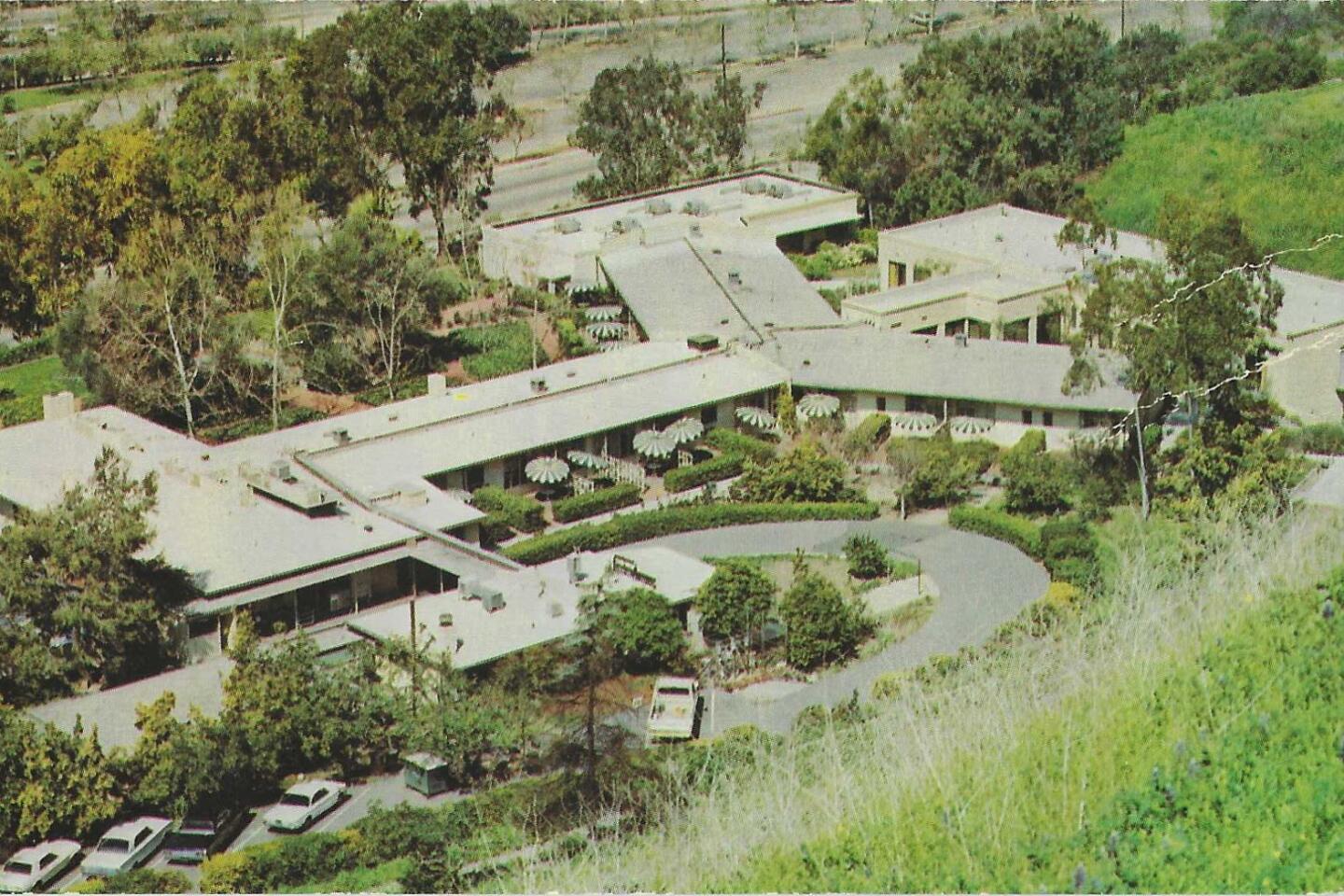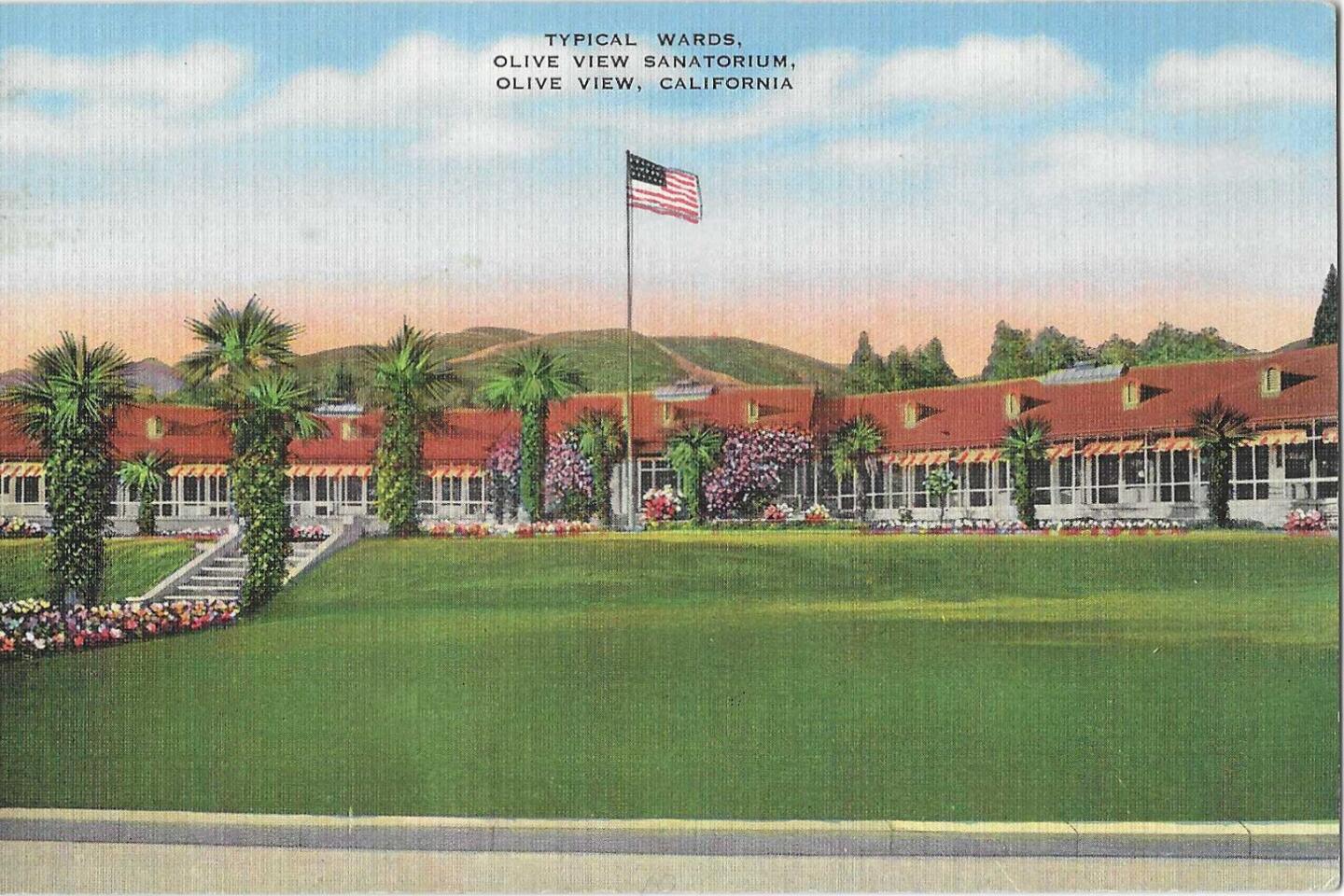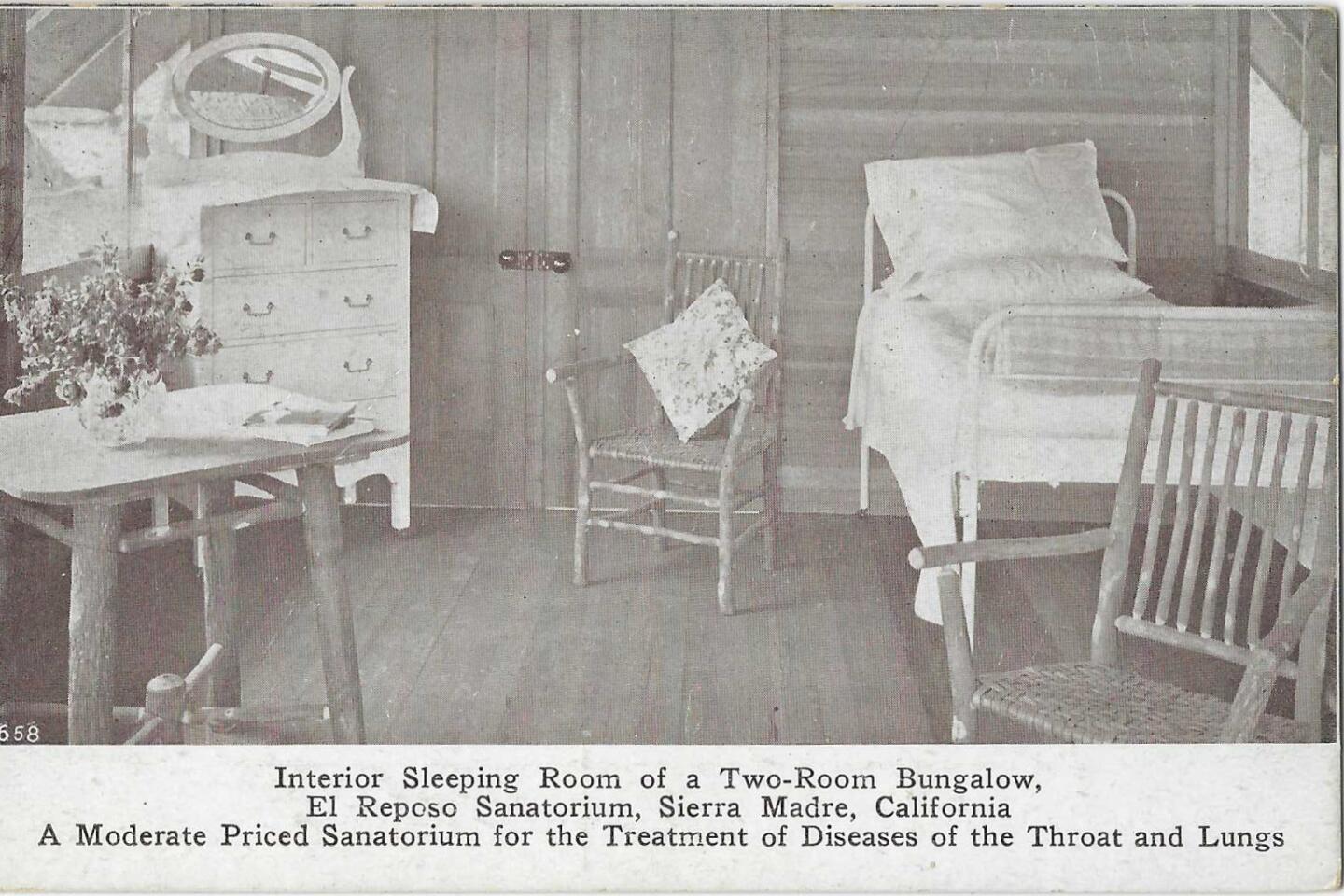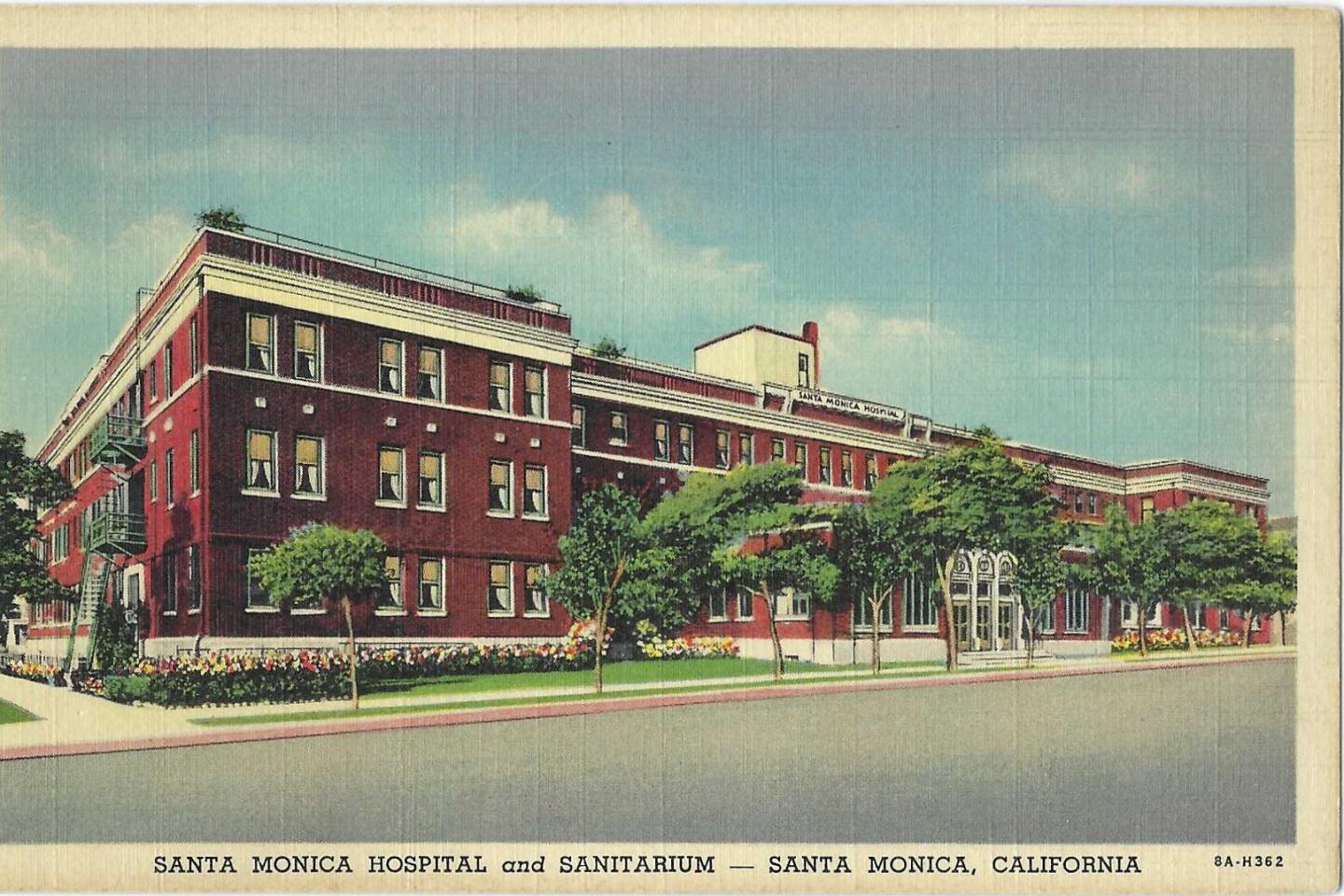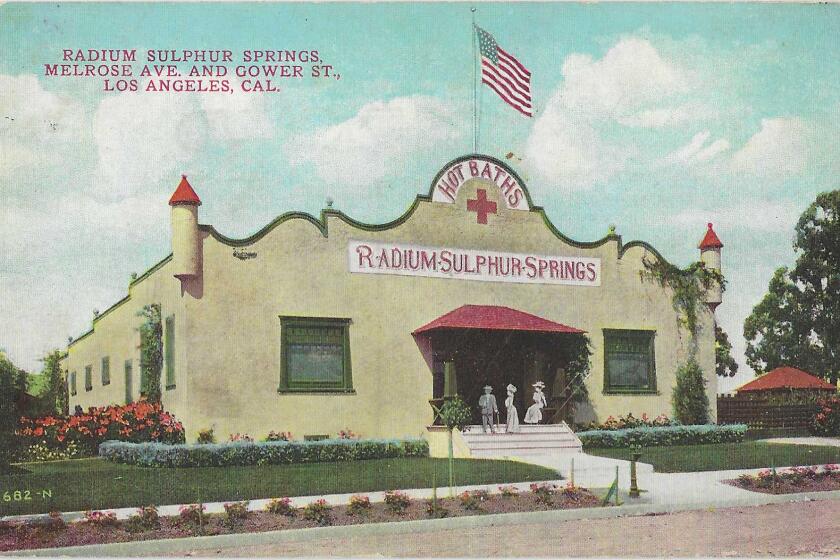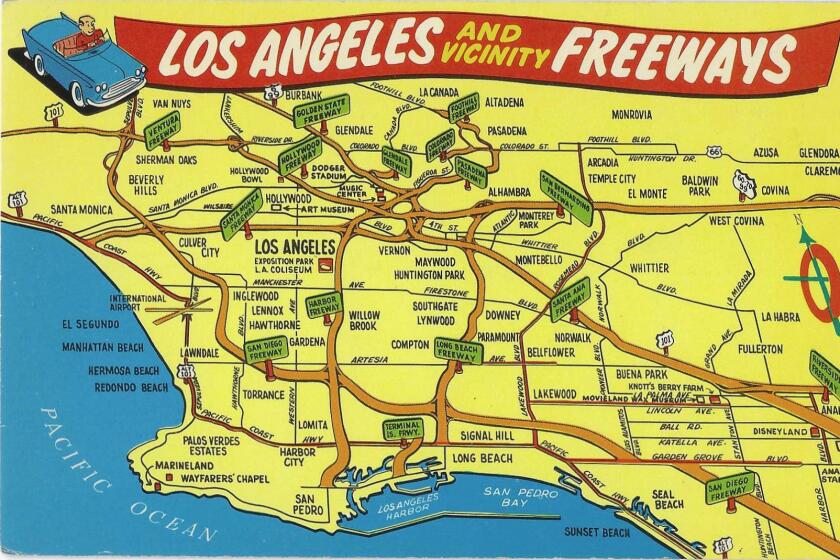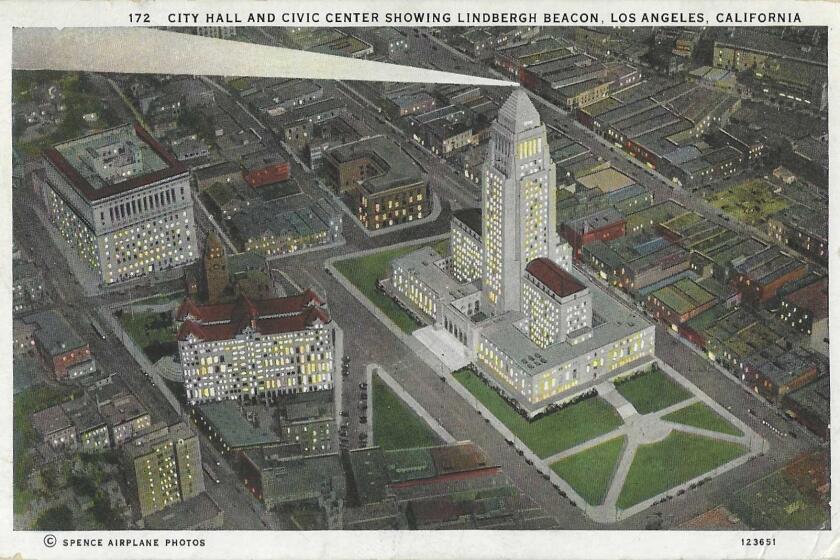Southern California’s curious history as the sanitarium capital of America
- Share via
Just think of all of the ballyhoo and bragging that Los Angeles’ 19th century promotional machine contrived: Come to Southern California! Come live in paradise! Perpetual sunshine, prosperity and health!
And come they did, by the tens of thousands, stepping off the westbound trains and into the salubrious California sunlight, all of them bringing their hopes, and some — a not-inconsiderable number — bringing something else: the tubercle
bacillus.
And soon, the boosters would learn that old, old lesson about being careful what you wish for: It might come true.
Tuberculosis was called “the captain of the men of death” and “the white plague,” for how it left its victims pale and listless. In the 19th and early 20th centuries, consumption, as it was also called, killed more Americans than any other contagious disease. Over the centuries, TB did in the composer Frederic Chopin; the enslaved man Dred Scott, subject of a notorious Supreme Court decision; St. Junipero Serra, founder of the California missions; and First Lady Eleanor Roosevelt.
Invalidism was the back-seat passenger to California’s second gold rush: tourism. “Health” comes first in Charles Nordhoff’s 1875 book “California: for Health, Pleasure, and Residence.” The chapter “Southern California for Invalids” begins with Nordhoff’s chance meeting with an old friend who, in three months in San Bernardino, altered from a sickly shadow of a man to a hearty fellow who told Nordhoff, “This climate has added 10 years to my life.”
Nordhoff opened the door, and Americans swarmed through it. The sufferers were welcomed by the new TB tourism industry. A “sanitarium belt” extended across Southern California, from Los Angeles to the Inland Empire to San Diego.
Explaining L.A. With Patt Morrison
Los Angeles is a complex place. In this weekly feature, Patt Morrison is explaining how it works, its history and its culture.
Some were legitimate hospitals, using best-known practices at the time to make the best of an incurable disease. Some advertised themselves as “resorts” offering healthful outdoor living: croquet, tennis, naps in hammocks, sunshine and wholesome food that made TB sound like a vacation. Some were medically supervised villages for scores of residents, with schools, hobbies and social events.
And it wouldn’t be America had there not been the quacks, showmen with snake-oil nostrums at the ready: garlic derivatives, copper treatments, patent remedies like “Tuberculene” — active ingredient, creosote. They worked, all right — in extracting gold from the pockets of the desperate.
The Chamber of Commerce dream demographic for new Angelenos was hale, white, middle- and yeoman-class Americans. But when Southern Pacific Railroad — a full partner in populating this new Los Angeles — began running ads inviting passengers to “California — the Sanitarium of the World,” some of the PR men and politicians started worrying that L.A. would turn into Lourdes on the Pacific, populated by “lungers” (pronounced lung-ers, not lunge-rs).
The first chapter, though, was the sanitarium industry.
At first there were just doomed people pulling up stakes from cold and dank and crowded places to come here. One of the earliest was Emma C. Bangs. She brought her sickly daughter from the East and, in 1882, bought land on the eastern lip of the arroyo in Pasadena, the site of the present-day U.S. Court of Appeals. She built a boarding house and cottages, and word of mouth brought recruits of the “busted-lung brigade” to Pasadena.
The geology that cursed Southern California with earthquakes also blessed it with restorative hot springs.
By the time Bangs died in 1905, the San Gabriel Valley was a destination for consumptives.
To the east, in Monrovia, Dr. Francis Pottenger — whose first wife had died of TB — opened a model sanitarium. Remember that sanitariums weren’t modern hospitals where patients dropped in for a checkup or treatment. TB patients lived, and died, on Pottenger’s 40 acres, under his treatment regimen of fresh air and repose. Pottenger retired in 1955, and in time his land fell to its California destiny: a housing development. Fun fact: Pottenger’s most famous patient was the silent film comedienne Mabel Normand, reputedly the first movie actor to throw a pie in another actor’s face — that of Ben Turpin, whose face was already funny enough without custard. Normand died in 1930, at age 36, with her secretary holding her hand.
In the same San Gabriel foothills, others opened their doors, and their windows.
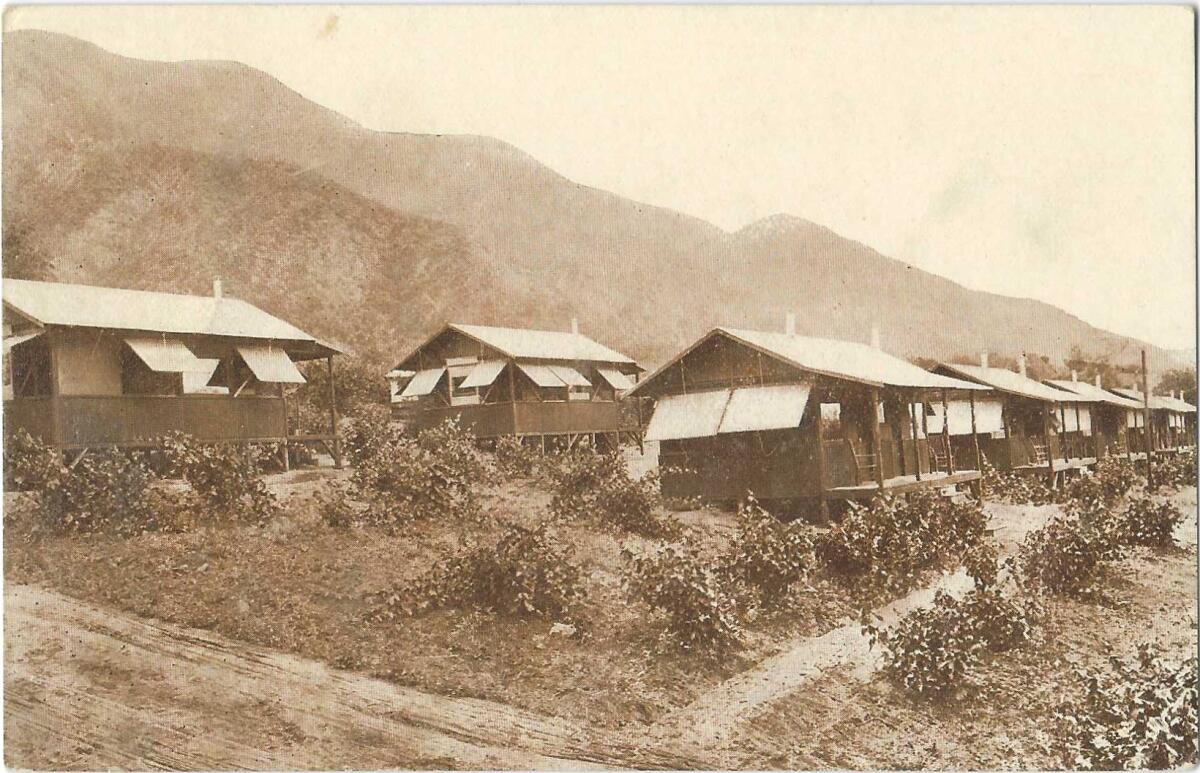
El Reposo, in Sierra Madre, promoted itself as a “moderate priced” sanitarium.
In Altadena, Dr. Henry Stehman established the La Viña Sanitarium. He came from Chicago with bum lungs of his own and created a refuge as different from damp, crowded cities as he could make it: a mini-rancho, with fruit trees, chickens, cows, horses and its own post office and, for the patients, brown bungalows with white trim. La Viña fed the patients what it produced and sold the rest to pay for the care of poor patients and for treating soldiers with toxic-gas lung damage from World War I.
The place burned down in 1935, in fires that rampaged from Malibu to the San Gabriel Valley, but was rebuilt with insurance and donations. In the 1980s, it merged with Pasadena’s Huntington Memorial Hospital. Fun fact: La Viña was a beneficiary in the will of a rich Bel-Air socialite called Evelyn Scott. You won’t know her name, nor perhaps her husband’s, L. Ewing Scott, but in the first case of its kind in California, Mr. Scott was convicted of murdering Mrs. Scott, without the latter’s body ever having been found. Rumor was that he buried her in the cement of the newly poured Sunset Boulevard offramp of the San Diego Freeway; as an elderly parolee, Scott told a writer he had buried his wife in the desert outside Las Vegas.
The City of Hope in Duarte, the world-renowned cancer research center, began with a NIMBY eviction. In 1902, L.A.’s Jewish community opened a hospital — a spectacular Victorian building that still stands on Carroll Avenue in Angelino Heights.
That same year, the state Legislature was making noises about banning TB “undesirables” from California. Soon, Carroll Avenue neighbors complained to the city that they didn’t want tuberculosis patients hanging around. Eventually, in spite of a lawyer’s appeal that “God almighty gave us this climate that attracts consumptives … and God almighty also imposed on us an obligation to care for them when they come,” the city saw fit to restrict TB patients and sanitariums from being too close to churches, schools or homes.
Thus, in 1913, the Jewish Consumptive Relief Assn. founded and funded two tent-cottages on 10 sunny acres in Duarte as a free and nonsectarian sanitarium. Fun fact: At a swanky May 1914 fundraiser on the roof of a downtown department store, a few months after the sanitarium opened, The Times marveled at the amusements and attractions, among them “a buxom Hebrew maiden wearing policewoman’s star” who arrested young men and put them in play jail, where they paid a donation to bail themselves out.
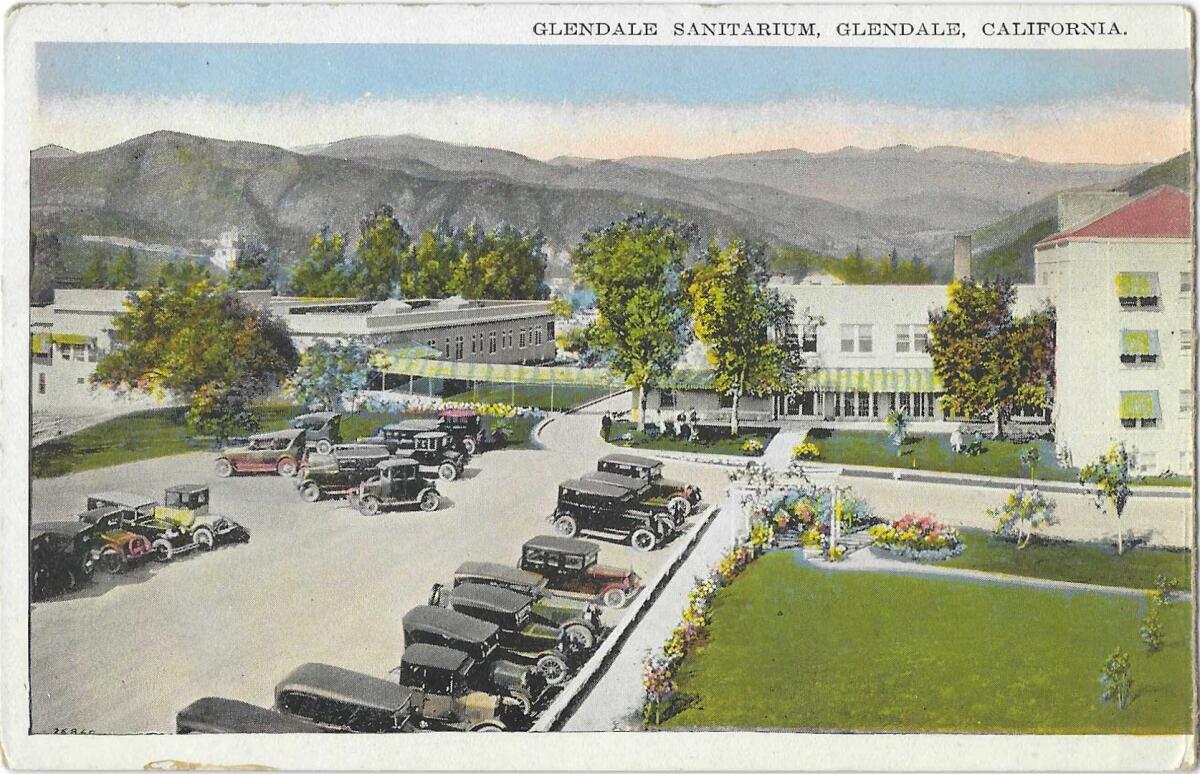
Farther afield in Glendale, the operators of the fabled Battle Creek, Mich., sanitarium — led by Dr. John Harvey Kellogg, whose cereal lives on — took over a fanciful and failed hotel. In 1905, they turned it into a sanitarium run on the same Seventh-day Adventist Church health principles as the one in Michigan. It flourished, to the point that, in 1923, the company bought 28 acres elsewhere in Glendale and built a new sanitarium and a hospital. The latter operates today as Adventist Health Glendale; the quaint sanitarium closed in 1924.
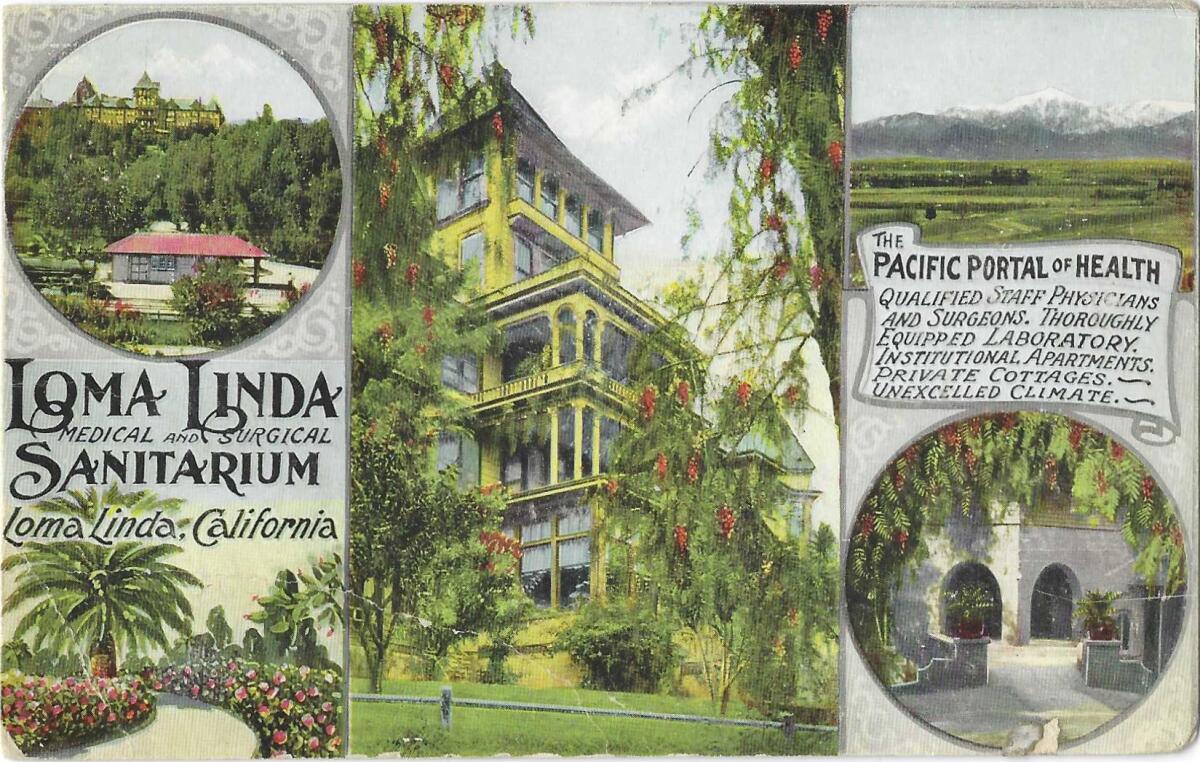
In Redlands, Seventh-day Adventists started up another sanitarium, also by taking over a failed hotel. What began in 1905 with two patients is the vast Loma Linda University complex with the university’s medical center. The original sanitarium promoted its medical and recreational advantages — croquet games among the orange groves — in vivid brochures and postcards. Fun fact: Dr. Abbie Winegar Simpson, who taught medicine at the Battle Creek sanitarium, helped to organize the Glendale facility, then ran the Long Beach sanitarium with her husband. Dr. Winegar Simpson died in 1949 at age 83, as a patient at the Loma Linda sanitarium. (OK, turns out some of these fun facts aren’t all that fun.)
And perhaps sturdiest of all, Barlow Sanatorium. Like many others in his healing profession, Dr. W. Jarvis Barlow was chased west by his own TB case, and he decided to share his newfound good health with others. He bought 25 acres in Chavez Ravine — that’s right, the Dodgers’ Chavez Ravine — and opened his sanitarium in 1902. It was an early “in” fundraising cause for L.A.’s high society; its sanitary techniques became routine practices (the city banned public spitting), and its work continues today as the Barlow Respiratory Hospital. On its grounds are still the remnants of half a century of hospital buildings and patients’ cottages, now historic landmarks that you might have seen while trying to avoid paying for parking at Dodger Stadium. One of the buildings was used as a hospice during the AIDS crisis. Fun fact: When Barlow died, in 1937, he apportioned his estate among his family, some charities, the hospital he founded and 11 strangers.
With so much of the “sanitarium belt” spread across hot, bright Southern California, why, then, open one next to the ocean, with its damp, lung-swaddling fogs? But there it was, the Long Beach Sanitarium, another one run along Battle Creek methods, employing mysterious techniques advertised as “electrical and Mechanical Swedish departments.” It opened in 1906 and was so glamorous that even healthy tourists came by to have a look.
“Winters ALWAYS WARM. Summers ALWAYS COOL,” it promised. In 1923, it became the St. Mary’s Hospital, and 10 years later, it became … nothing — nothing but shards and rubble after the Long Beach earthquake.
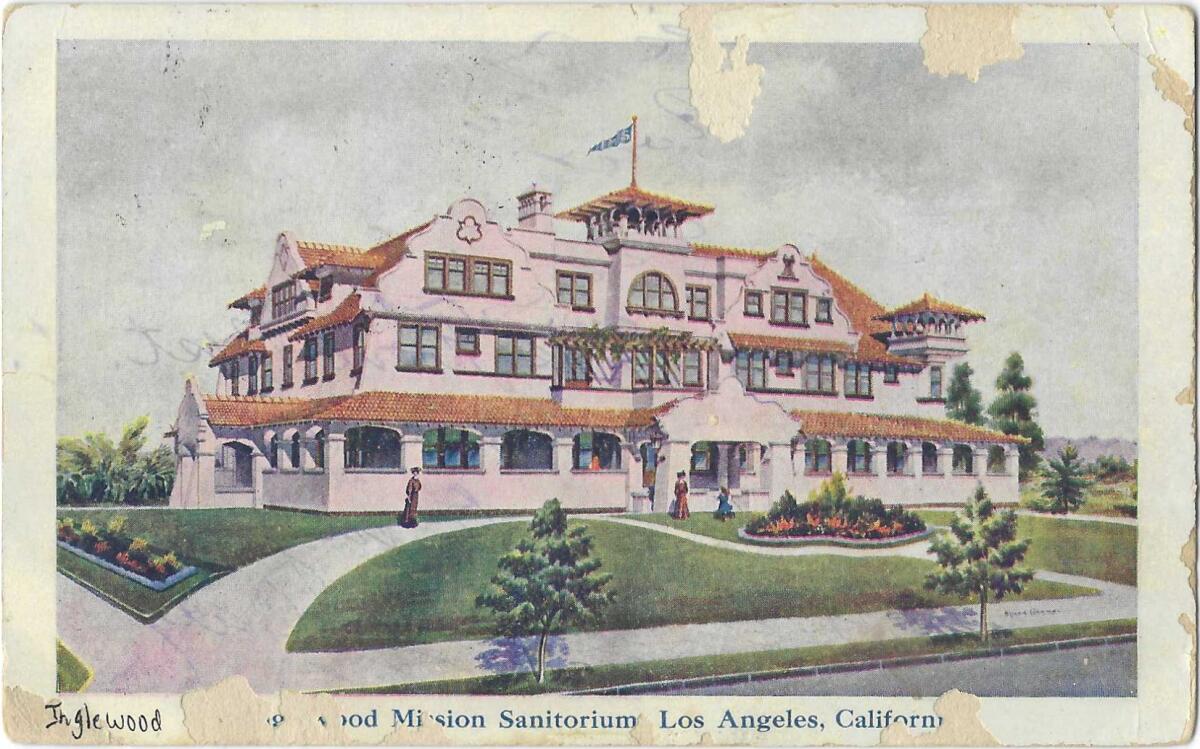
The ghosts of these places and their patients are all across our landscape: the Inglewood Mission Sanitorium in L.A.; the Independent Order of Foresters tubercular sanatorium in Lopez Canyon in Sylmar, for members of the fraternal order; the Arrowhead Springs Sanitarium above San Bernardino; the Foothill Sanitarium in San Fernando, whose enclosed patios could be “used for sunbathing”; Broadview Sanitarium, built in 1947 across the Arroyo Seco from the Southwest Museum, now operating as a Christian Science nursing home; the Esperanza Sanitarium in Eaton Canyon; the Paradise Sanitarium on South Western Avenue, “a paradise indeed for the chronically ill”; the garden-encircled San Gabriel Sanitarium, not far from the mission, offering its signature “Pneumo-Chemic” treatment.
Over the course of a couple of decades, alarmed civic boosters and civic leaders began to realize that the campaign of Southern California enticements had maybe worked too well. Too many people of the “wrong sort” — not just sick but sick and poor — were making their way here, dragging down Southern California’s reputation for robust health, prosperity and a practically unnatural longevity.
There is no Beverly Hills Freeway. Nor does the 2 connect to the 101. What even is the 90? These are the freeways that didn’t happen as planned.
One TB refugee from Chicago was a classically ailing fellow named Charles Dwight Willard. Once here, he recovered enough to head the Los Angeles Chamber of Commerce, and within half a dozen years of arriving, he took to the pages of his promotional magazine Land of Sunshine to launch broadsides against some TB immigrants.
“We wish more population of the right sort … but we are particular. We are anxious to have our friends come, but not everybody.” And if poor, sick, white people were bad enough, the prospect of poor, sick and brown or Black people was just too much for a region that burnished its reputation as a “white spot.” “White” on the face of it meant free from civic corruption and unions, but — wink-wink — everyone knew there was more to it than that.
The year after Willard stepped off his train into paradise, the California Board of Health took the “radical” step of asking the state to stop this surge of TB arrivals: halt trains at the state line, examine passengers, quarantine anyone who looked tubercular and even send them right back where they came from. Ellis Island inspections, Golden State-style.
On the eve of World War I, the California Tuberculosis Commission played one-player tennis, arguing with itself: “The majority of residents who are afflicted with the disease did not contract the disease within the state.” Yet “it is of course absolutely unfair on the part of tuberculous patients of other states, and friends of such persons, to send them to California with hardly more than their transportation expenses, so that they almost immediately become a tax upon the private and public charities of California,” where charitable sanitariums for the indigent were up and running. But on the other hand, “the great majority of such tuberculous persons come here in the honest and sincere desire and hope that the California climate may in some way enable them to nurse themselves back to health and civic usefulness … it would be only just, therefore, that we should permit the tuberculous sick to come to us.”
What saved California from becoming Lourdes of the Pacific, what saved millions of lives the world over, was science — the miracle drugs of the 1940s and ’50s. One of those miracle drugs banished polio, which is troublingly back in the news. And streptomycin, developed in 1943, stopped TB cold in most patients. As a young reporter, I interviewed Dr. H. Corwin Hinshaw, who made that discovery in 1945, along with his colleague. For a few months, before production could scale up, Hinshaw’s San Francisco laboratory held the world’s entire supply of streptomycin, and pleas for the miracle drug poured in from the afflicted from Siberia to Tierra del Fuego.
That’s how it happened that the disease that generated a million-dollar industry of health immigrants no longer is treated with an airy bungalow or a lawn chair in the sun. It’s simply cured with a syringe.
Los Angeles is a big, complicated place. Patt Morrison explaining how it works, its history and its culture in Explaining L.A. on latimes.com.
More to Read
Sign up for Essential California
The most important California stories and recommendations in your inbox every morning.
You may occasionally receive promotional content from the Los Angeles Times.
